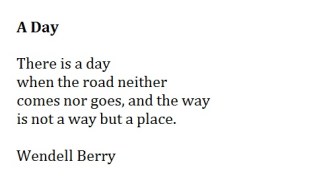
Rabbis Linda Joseph and Evan Schultz of the CCAR Worship and Practice Committee explain how the committee chose a more inclusive phrase as the CCAR’s general term for a Jewish milestone.
In recent years, existing terms for the Jewish coming-of-age ceremony—commonly referred to as a bar or bat mitzvah in singular, b’nei or b’not mitzvah in plural—have come to seem inadequate due to their gendered nature. For the past several months, the CCAR Worship and Practice Committee has searched for an all-inclusive, general term for this milestone for use in CCAR Press publications, CCAR statements, and on our social media channels.
When the CCAR Board assigned this task to our committee, we spent some time establishing criteria, researching, debating, and discussing. In our conversation, three key priorities were identified: We wanted a term to be inclusive of all gender identities and gender expressions. We wanted a term that honored the Hebrew language in its usage and meaning. And we wanted a term that used familiar or existing language so that it would be understandable, useable, and “sticky” (i.e., it would be inclined to be used).
Criteria in hand, the committee entered a research stage. We solicited colleagues in the CCAR and ACC to share with us the terms they used and why. We surveyed American, Israeli, and British colleagues as to their thoughts. We asked questions of experts in feminist theory, gender theory, and queer theory. We read sermons on changing language around this Jewish milestone. We consulted the Nonbinary Hebrew Project and Keshet.
Our research left us rich with possibilities. The commitment to tradition, creativity, and imagination of our colleagues and congregations presented us with at least sixteen viable options. Discussion ensued on the meaning, nuances, and interconnecting textual references of these terms, reminiscent of the pilpul (Talmudic disputation) of the rabbinic scholars of yore. Ultimately, we settled on the term “bet mitzvah.”
We found this nomenclature compelling for several reasons:
- Bet is the first Hebrew letter of the traditional name of this lifecycle event, so the term is gender neutral. Using the letter bet provides flexibility for a student to choose which term they would like to use—bar mitzvah, bat mitzvah, b’nei mitzvah, or bet mitzvah. It thus acknowledges the traditional terms while creating a new term that honors diverse gender inclusivity and expression. Bet mitzvah is also the term recommended by the Nonbinary Hebrew Project and is already in use in several congregations.
- The lovers of text in our souls associated the letter bet with the first letter of the Torah. It is the letter opening the parashah that honors all of God’s creations. It is a letter open to possibilities for what may follow. In addition, bet can be read as the conjunctive form of bayit, alluding to the inclusion of all participants in this coming-of-age ceremony who have a “home” in Judaism. In Hebrew, bet mitzvah makes sense as a conjunctive.
- Finally, bet is a term that both Hebrew literate and non-Hebrew literate members of our communities have heard before. Like the more traditional familiar terms, it is one syllable. The committee believed this term could become “sticky.”
The CCAR Worship and Practices Committee felt that bet mitzvah best reflected our determinants of inclusivity, honoring Hebrew, and using familiar or existing language. We also recommended that CCAR Press publish a footnote about the term when it is first used in each publication, until it becomes a regular part of our Jewish vocabulary. The CCAR Board accepted our proposal and recommendations.
Importantly, we do not intend for this term to replace “bar mitzvah” and “bat mitzvah” but rather to be an additional, inclusive option for families and youths. While “bet mitzvah” will be our default general term in CCAR materials, we hope that each student will be encouraged to choose the term that’s most meaningful to them.
Language by its very nature evolves with our human and religious mores and understandings. We begin with using bet mitzvah in CCAR publications, correspondence, and social media. It will guide us as we consider new designs for lifecycle certificates. But perhaps one day, there will be a future when websites have a tab labeled “Bet Mitzvah,” when your local Jewish bookstore carries bet mitzvah cards, and when you receive a “thank you so much for coming to my bet mitzvah!” note from a thirteen-year-old.
Rabbi Linda Joseph is a member of the CCAR Worship and Practice Committee. She is the rabbi of Bet Aviv in Columbia, Maryland, and serves as faculty for the URJ’s Introduction to Judaism program.
Rabbi Evan Schultz is cochair of the CCAR Worship and Practice Committee. He is the senior rabbi of Congregation B’nai Israel in Bridgeport, Connecticut.











